In the past, utilising defenders on both the near and far posts was a common strategy in defending against corner kicks.
However, gradually, many teams have begun to dispense with one or both of them or let’s say, alter their traditional roles of sticking solely to the post.
With advancements in set pieces and increased focus on them in recent years as a significant factor affecting match outcomes, competition for scoring goals from set pieces has intensified through various innovative methods.
Consequently, defensive systems and player roles have begun to evolve, with some teams considering the mere adherence of defenders to the near and far posts without accounting for the dynamics of the corner kick as a loss for the number of defensive players.
Therefore, the illustration below of defenders on the near and far posts is merely an initial scenario for some coaches for certain reasons.
Based on subsequent developments, their roles evolve into different functions, such as adjusting their positioning slightly to act as zone defenders alongside their teammates, filling specific defensive gaps according to the situation, advancing to gain the initial touch against flicks, ascending in a particular manner to execute an off-side trap, or going to defend short corners.
Additionally, one of the defenders may be withdrawn and replaced by another player in a different position.
These tactics of using post defenders are what we will explain in this tactical analysis.
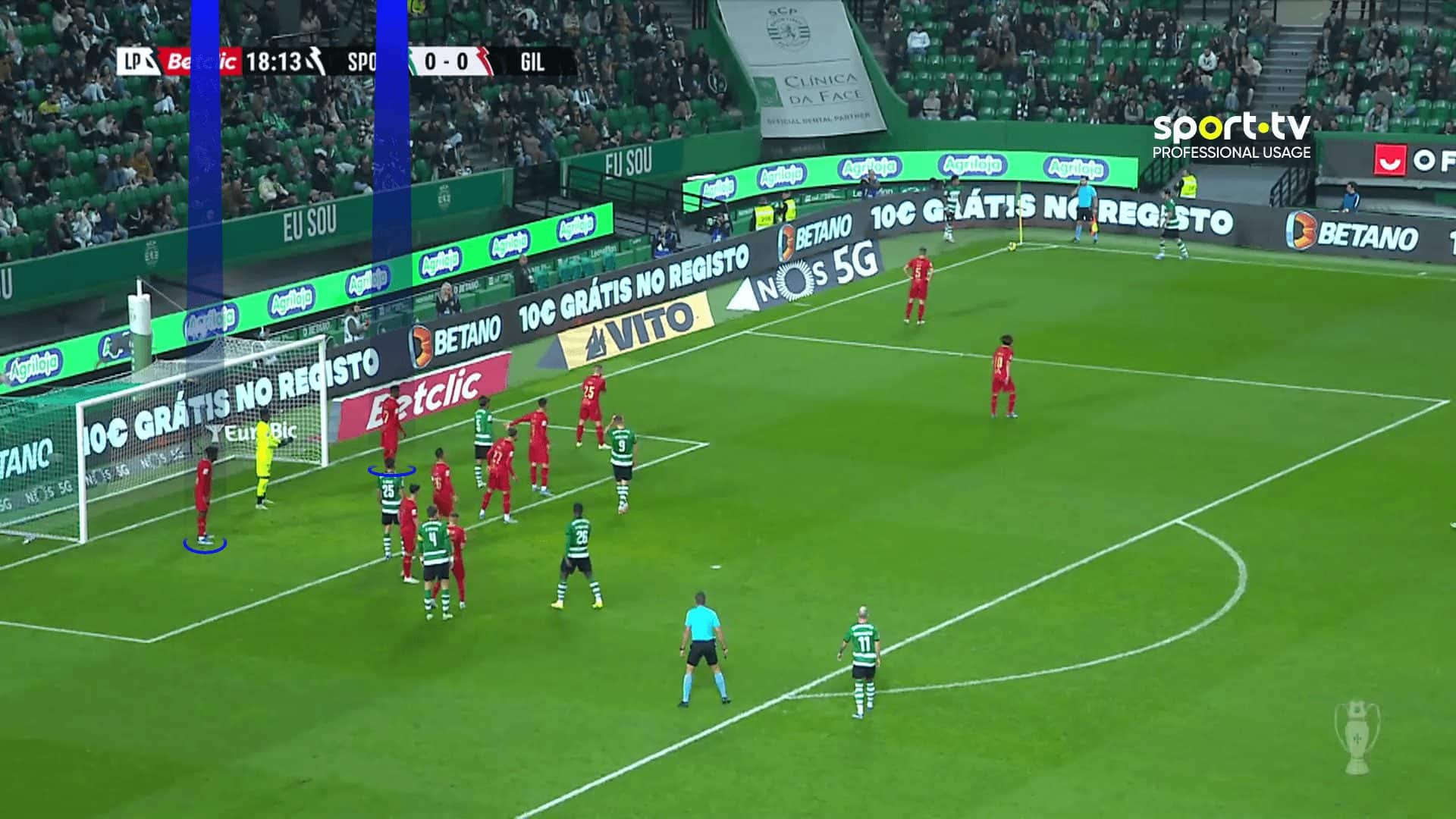
Direct shot or cross
Starting with the near-post defender, putting a near-post defender has many essential and common sense benefits as closing the dangerous direct shot to the goal as Mohamed Salah did with Egypt in the photo below scoring a direct goal from a corner.
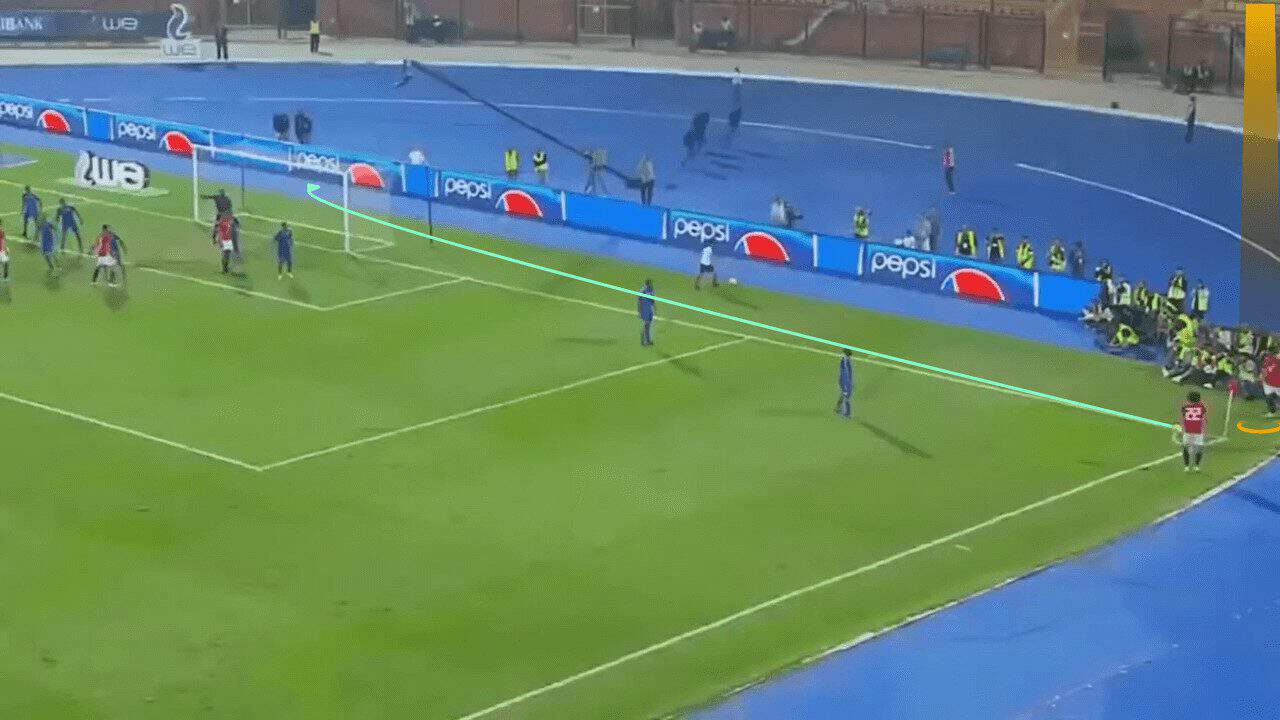
The same applies to direct crosses towards the near post.
A defender should be tasked with this responsibility to deal with such dangerous crosses that may enter without even being touched by the attackers.
As shown below, the path of this cross isn’t protected, so the attacking team decides to target this area with two blue players giving instructions for one of them to be close to the goalkeeper preventing him from claiming the ball, so the ball goes into the net without even being touched, as shown in the two photos below.
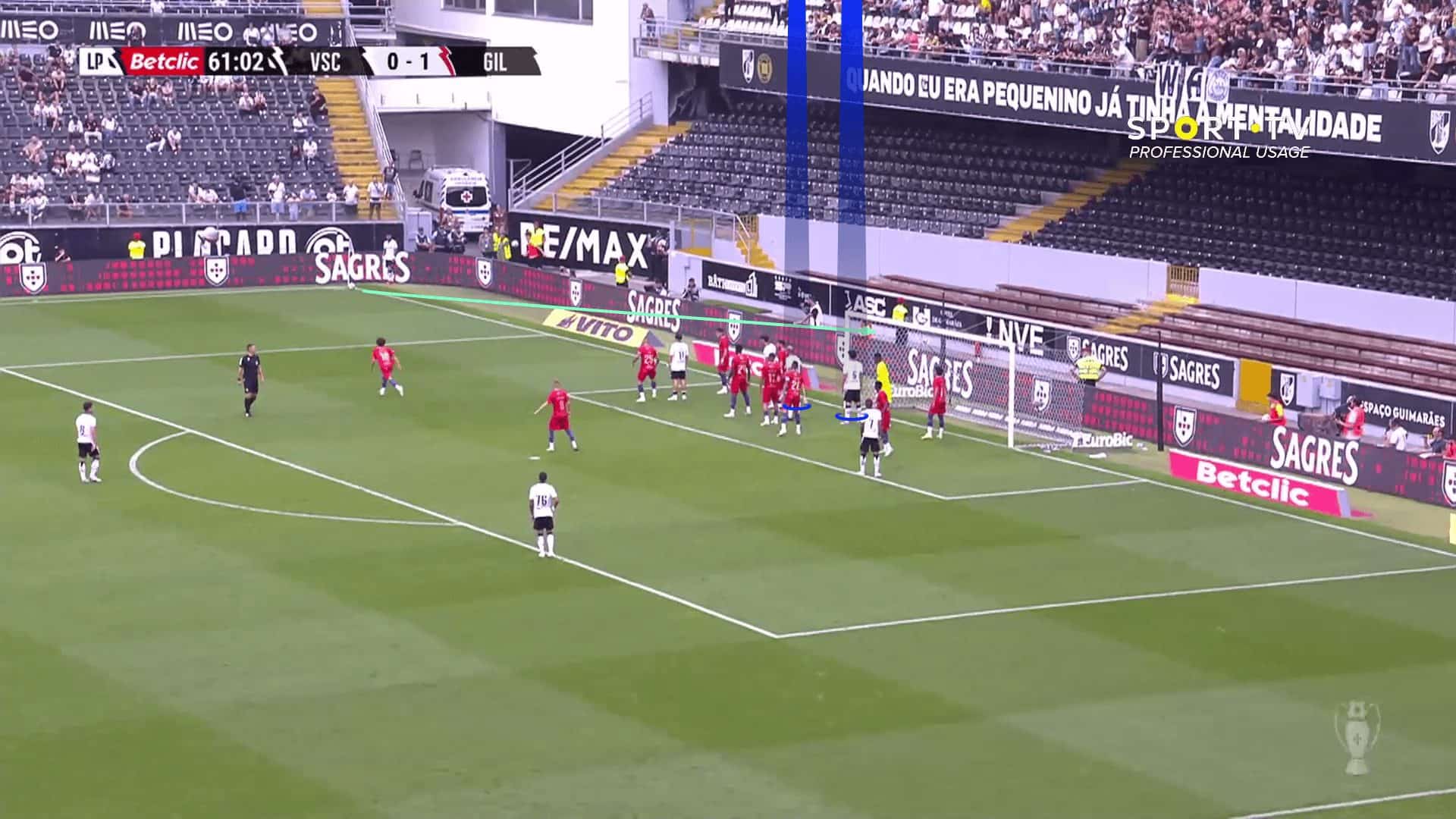
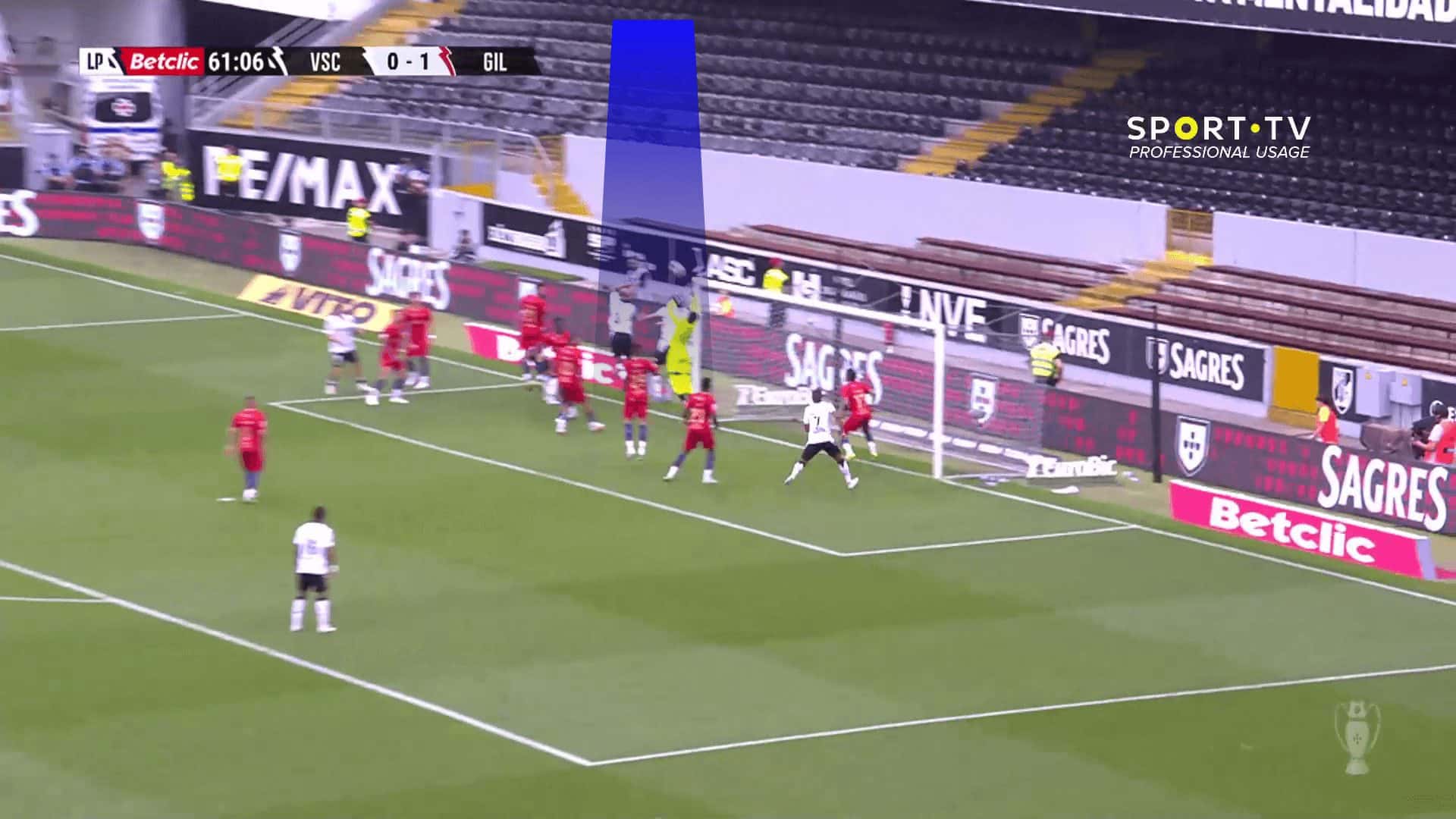
So, this is one of the near-post defender’s responsibilities: to cut this direct cross or shot, as shown in the two photos below, and we will go to the details later.
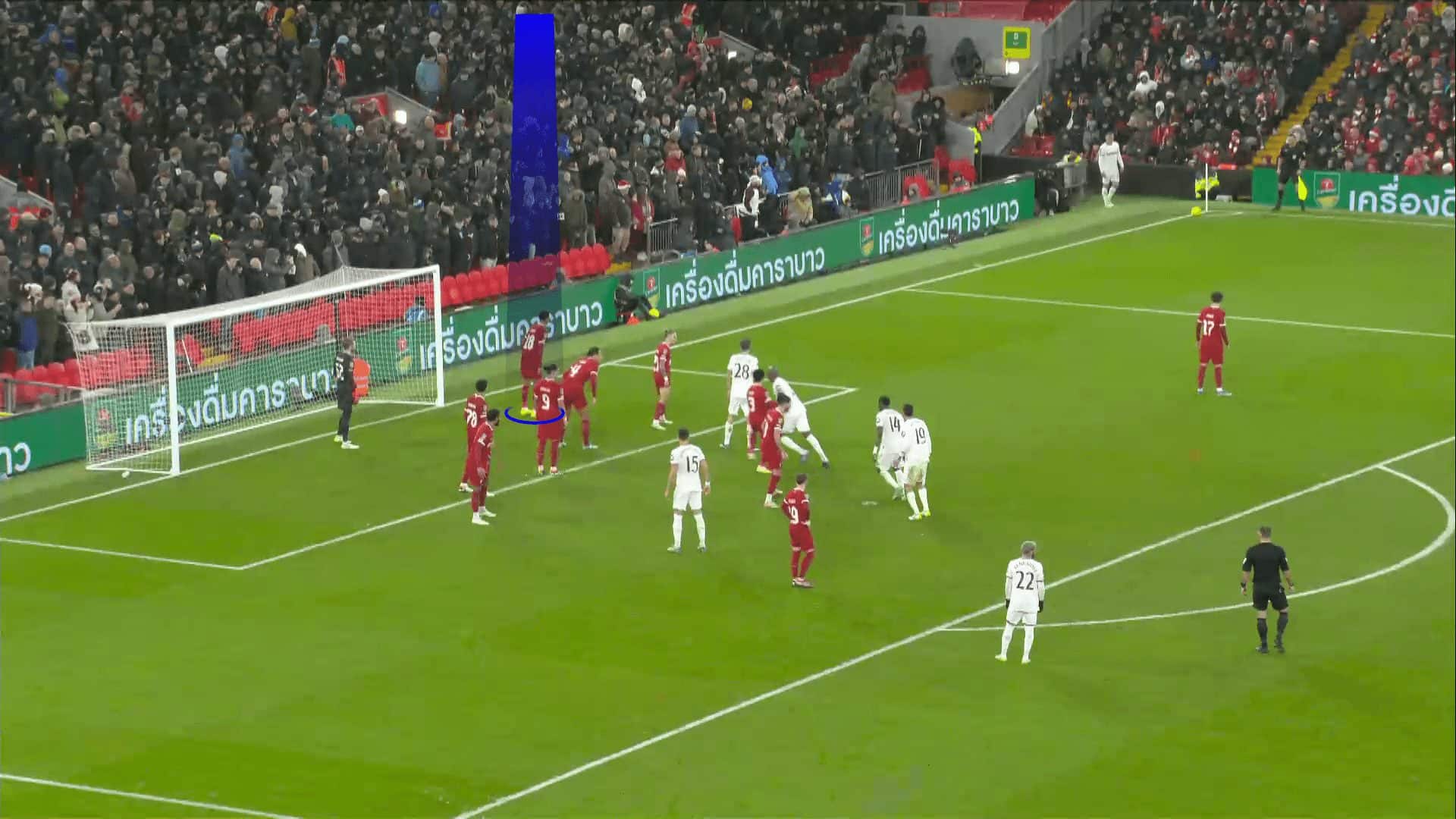
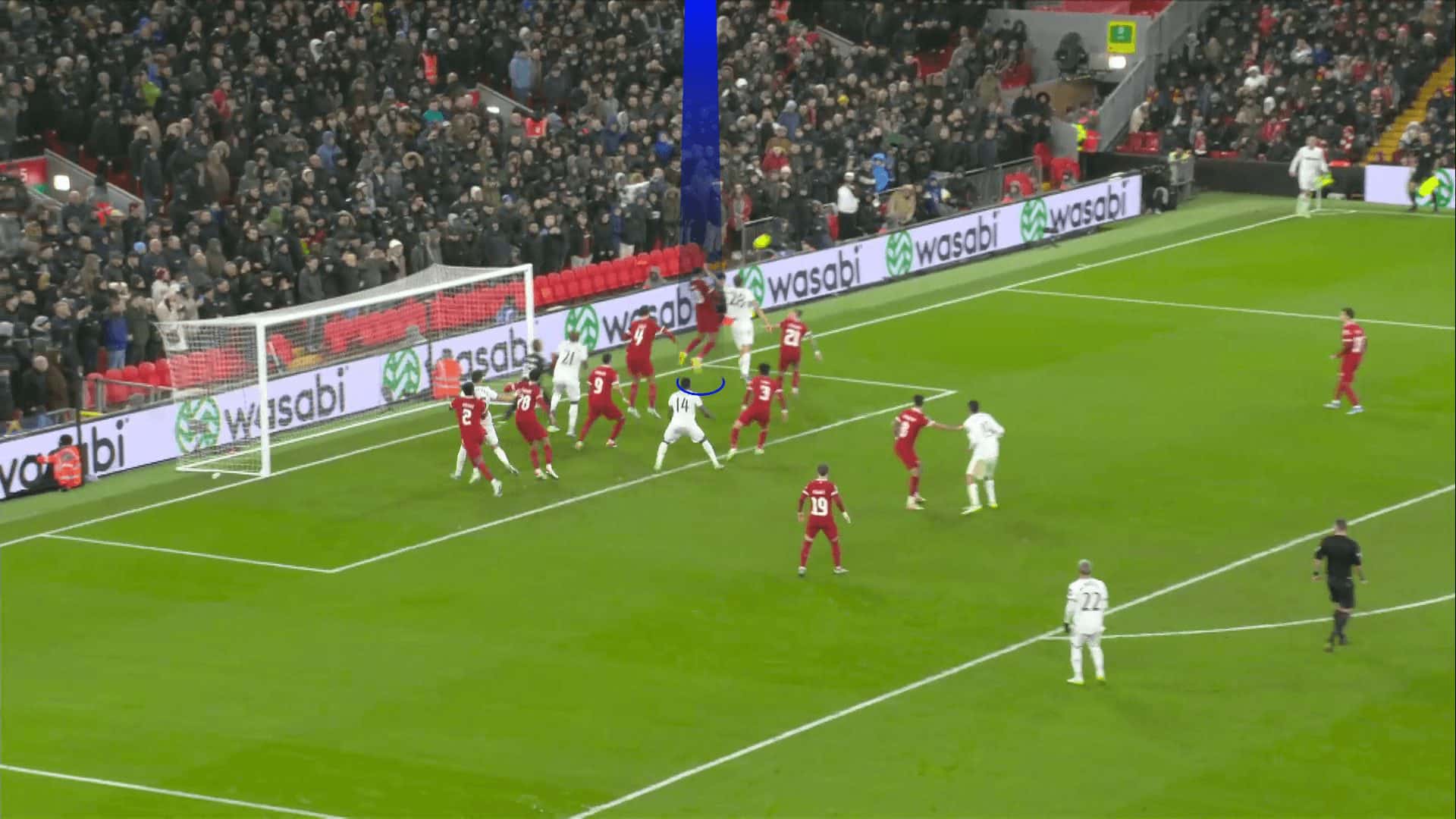
However, for instance, Liverpool below believe that if the corner kick is out swinging, there is no need for this defender to stick to the post.
Instead, he moves slightly outward as the other zonal defenders adjust to the new trajectory of the out-swinging cross, so he isn’t no longer a fixed near-post defender.
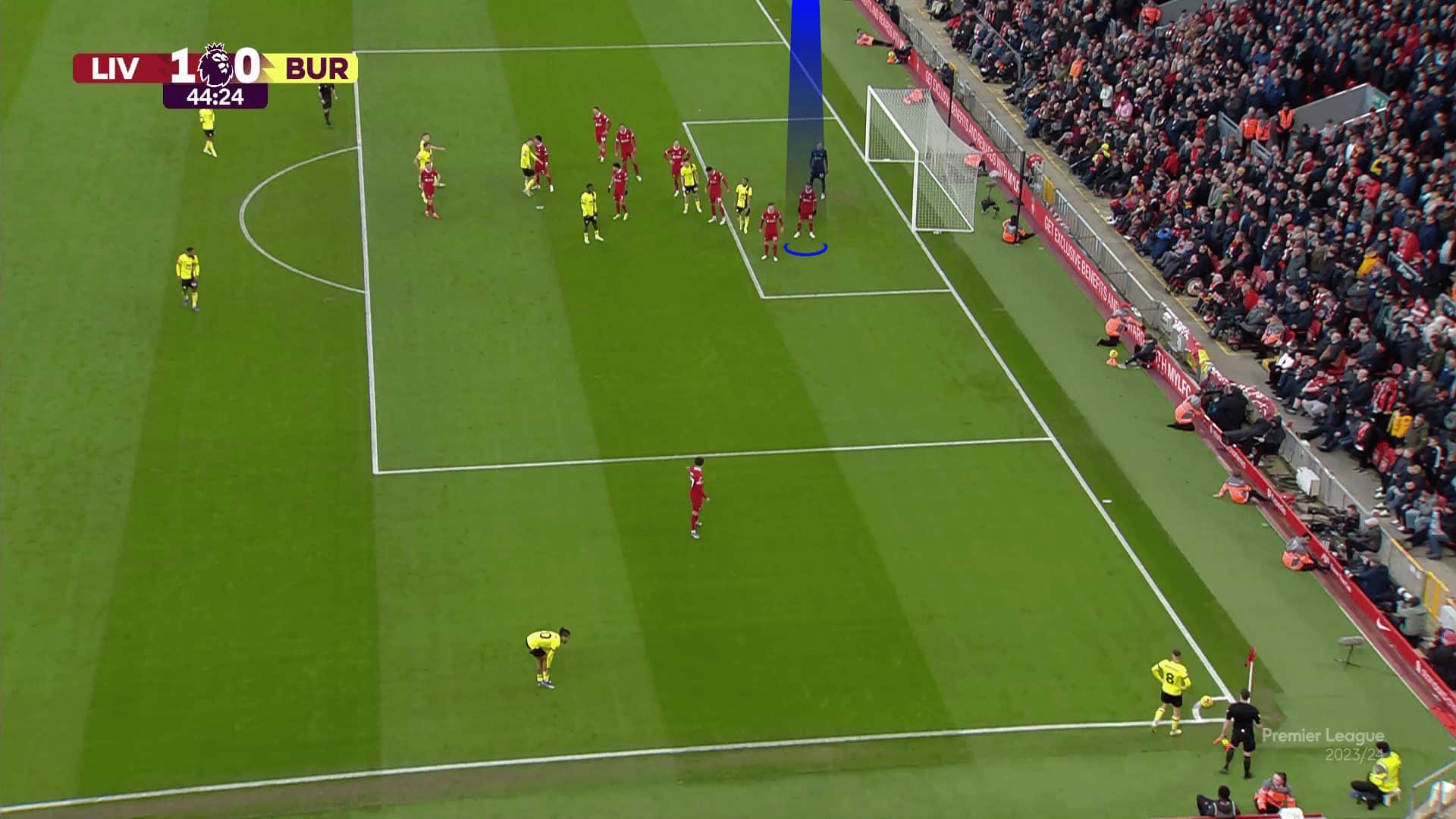
Now, we know that assigning a near-post defender has already many benefits, but is this all there is to it? Does he merely act as a defender protecting the trajectory of the shot or cross at the near post, and function as a post defender with no role other than adhering to the post?
Flicks
Now, we know that the near-post defender has the mentioned traditional responsibility, but what if the ball doesn’t go to this area, will he still be fixed to the post losing a player?
One of the other uses is asking him to go to defend flicks getting the first touch.
You can see Newcastle below defending AC Milan with a man-marking defending system with only two zonal defenders, in green, and a near-post defender, in blue, who is asked to defend against flicks, as shown in the second photo below.
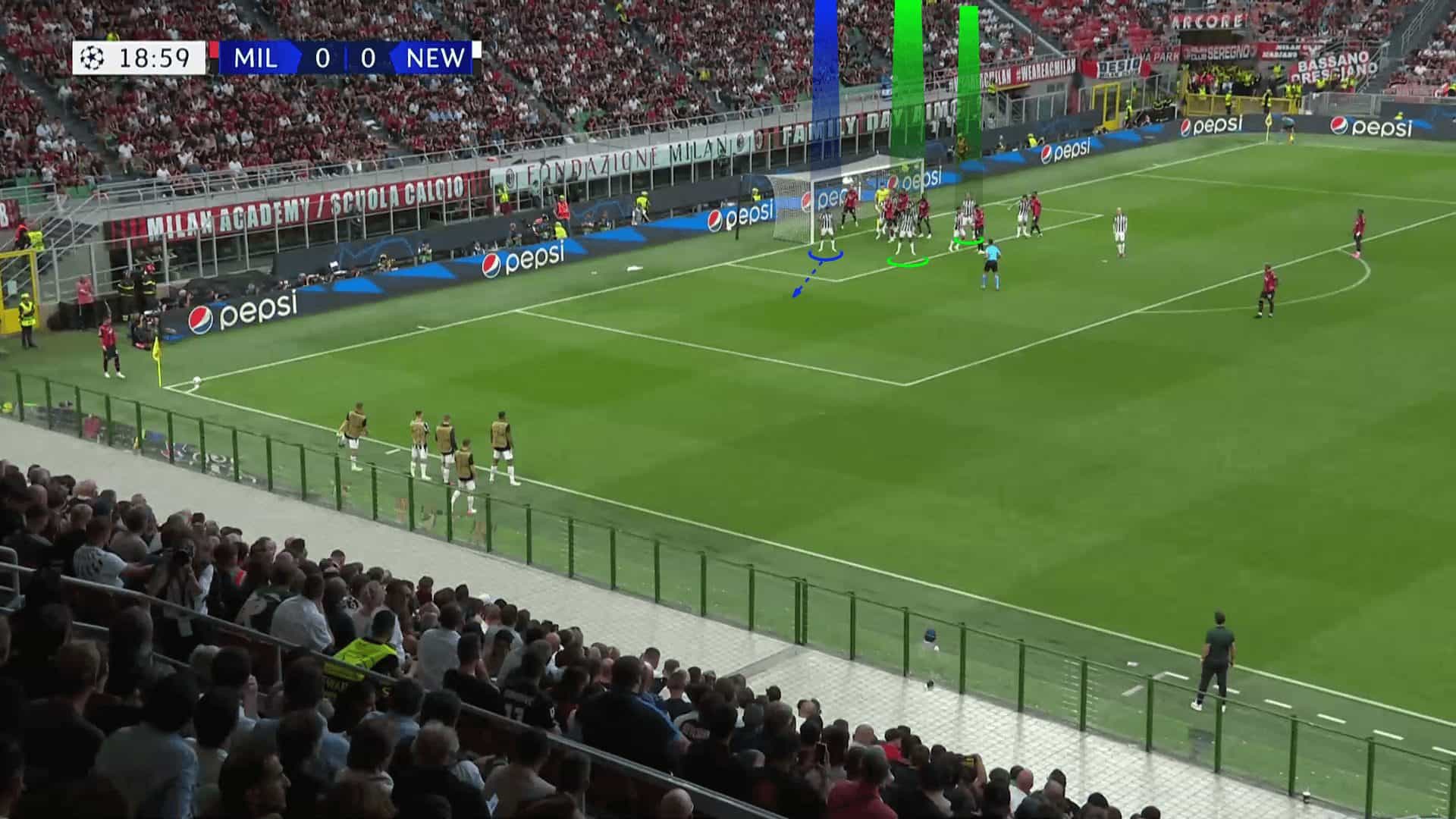
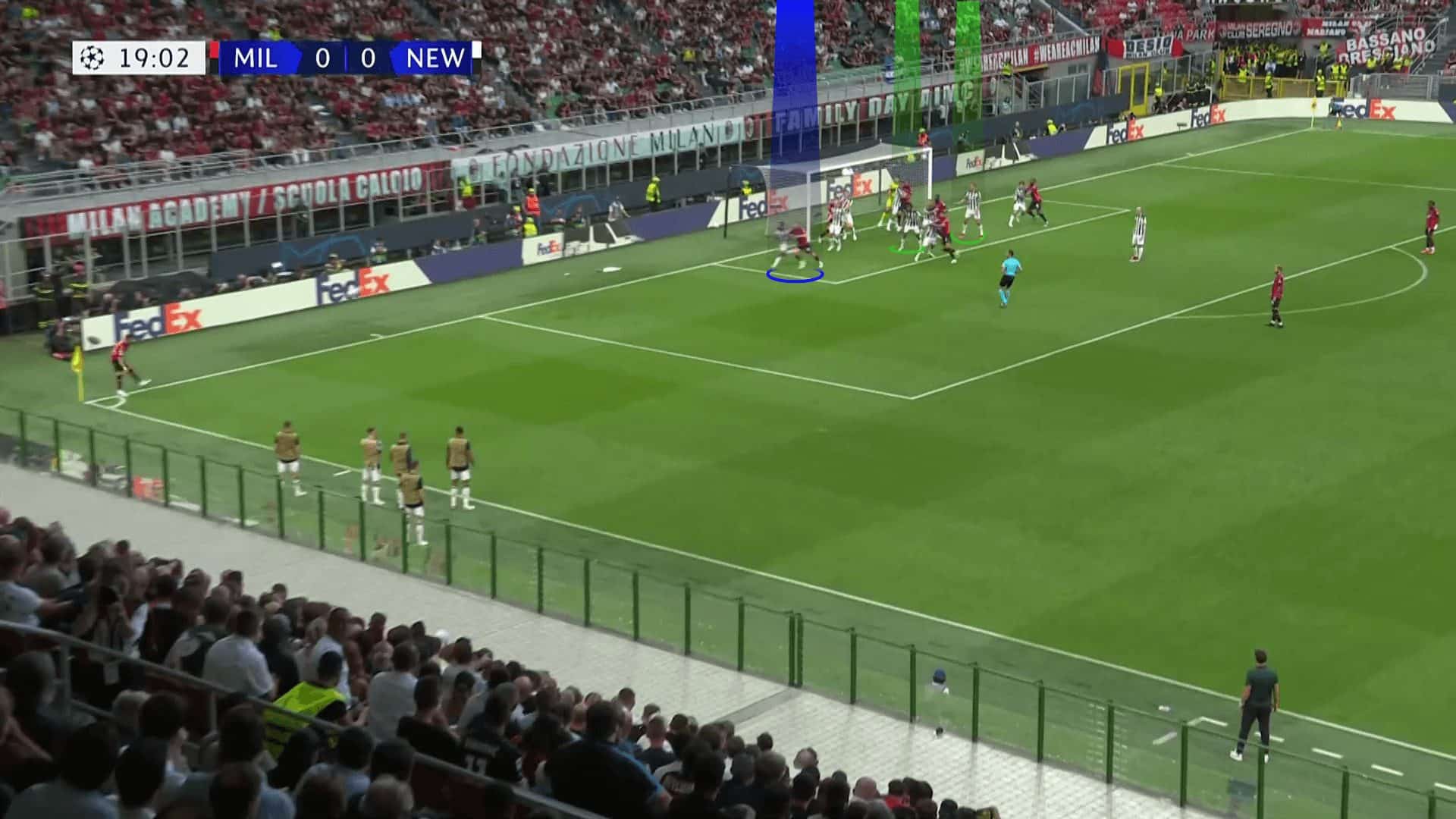
In the case below, Liverpool have another use for this defender, but let’s say that they have another way to defend flick at first.
They use the white-highlighted player to get the first touch defending the flick leaving a space behind him and the rest of the green zonal players.
This space is filled by the freer near-post defender, in blue, who has zonal responsibilities too, as shown in the two following photos.
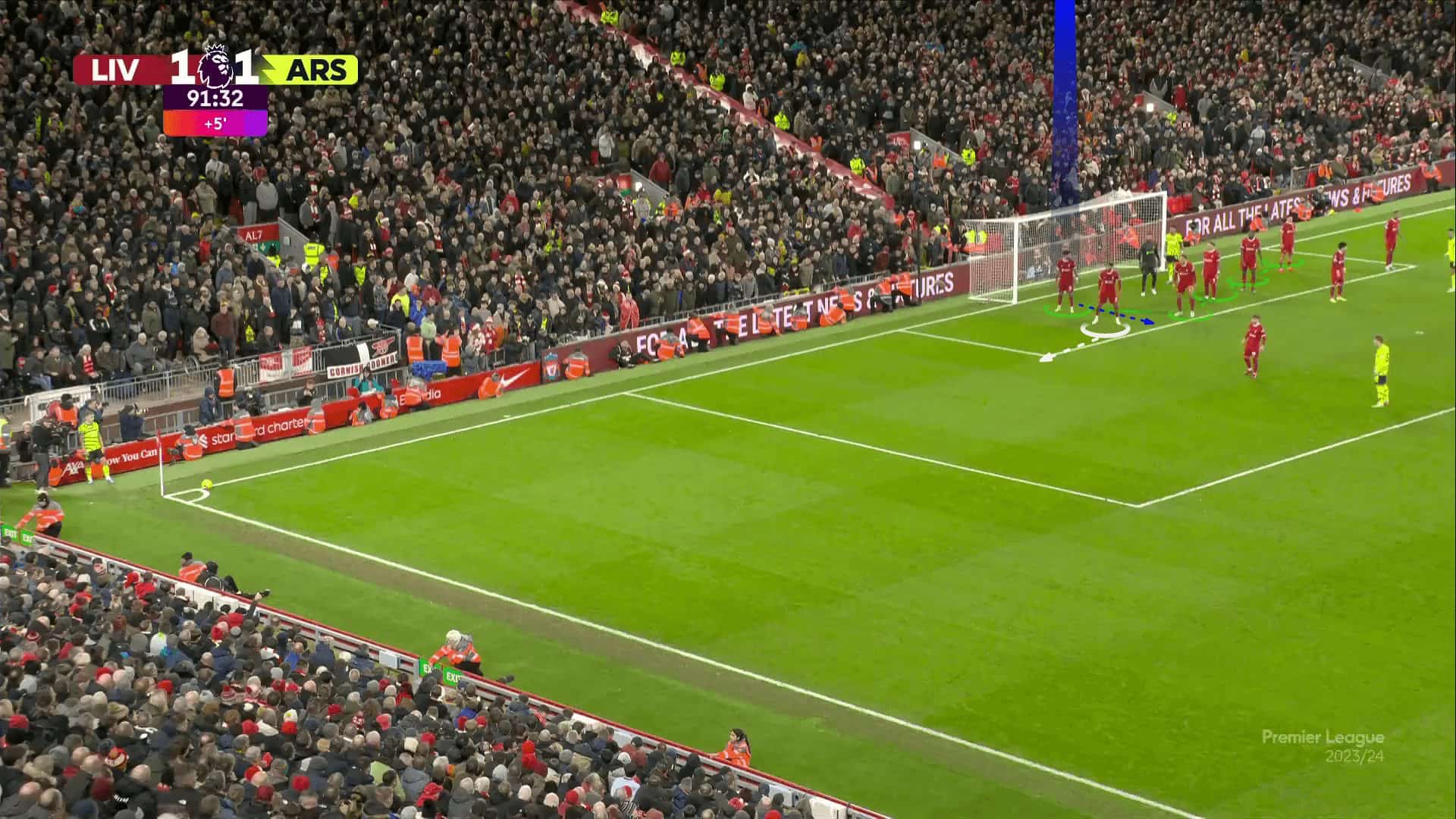
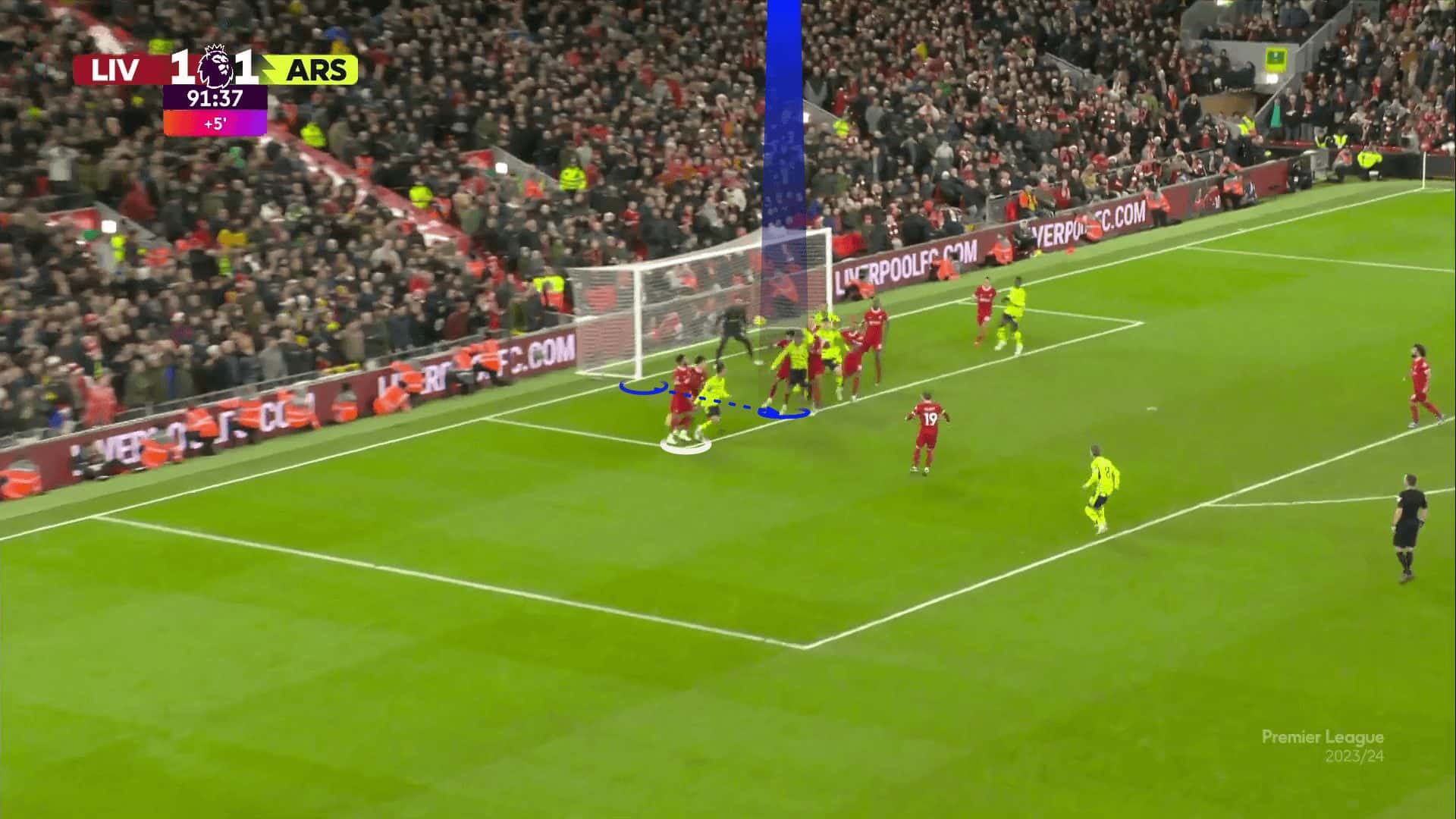
This near-post defender has the same responsibility in out-swinging crosses, but a little shifted to the outside, as we have mentioned above.
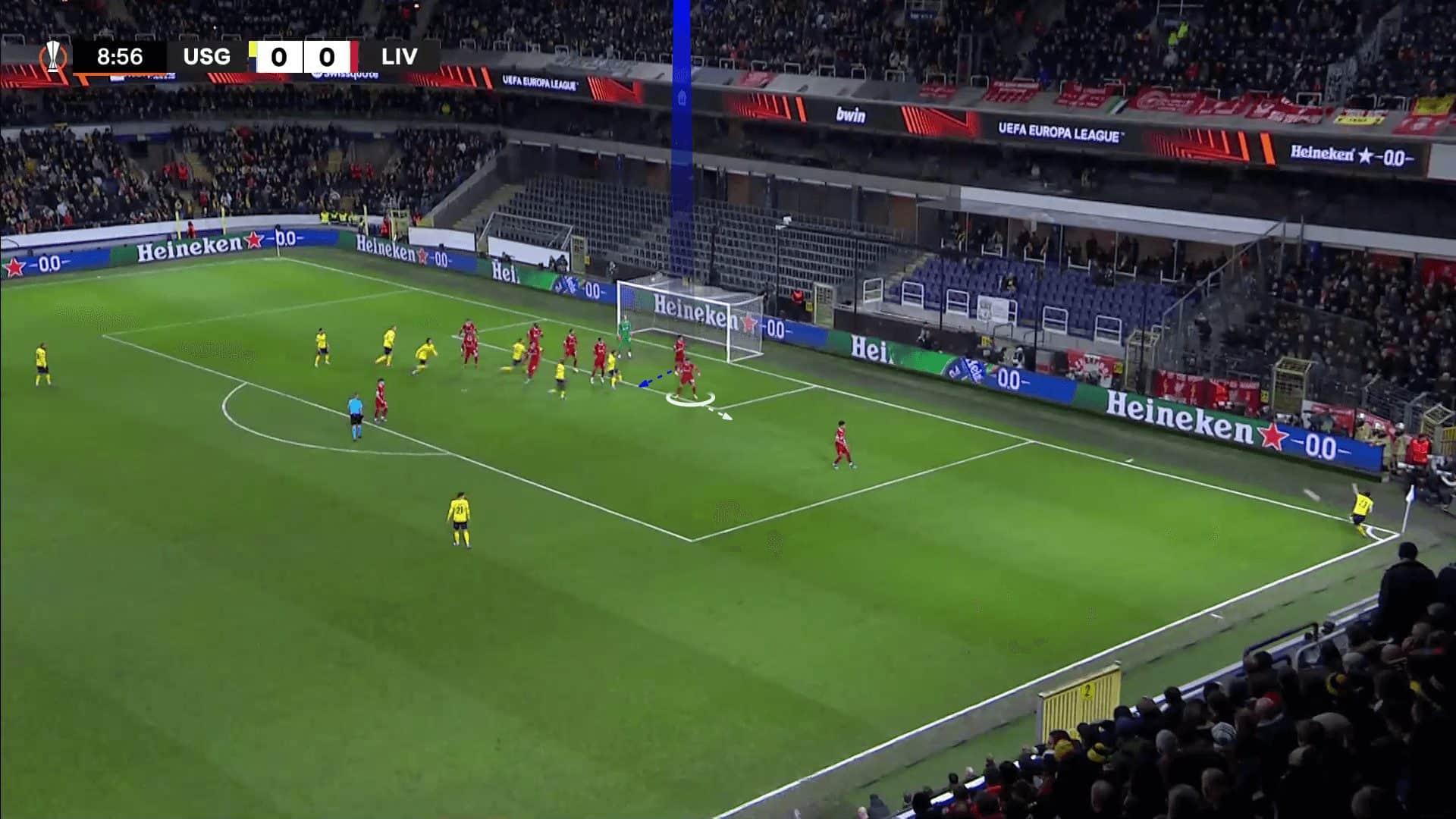
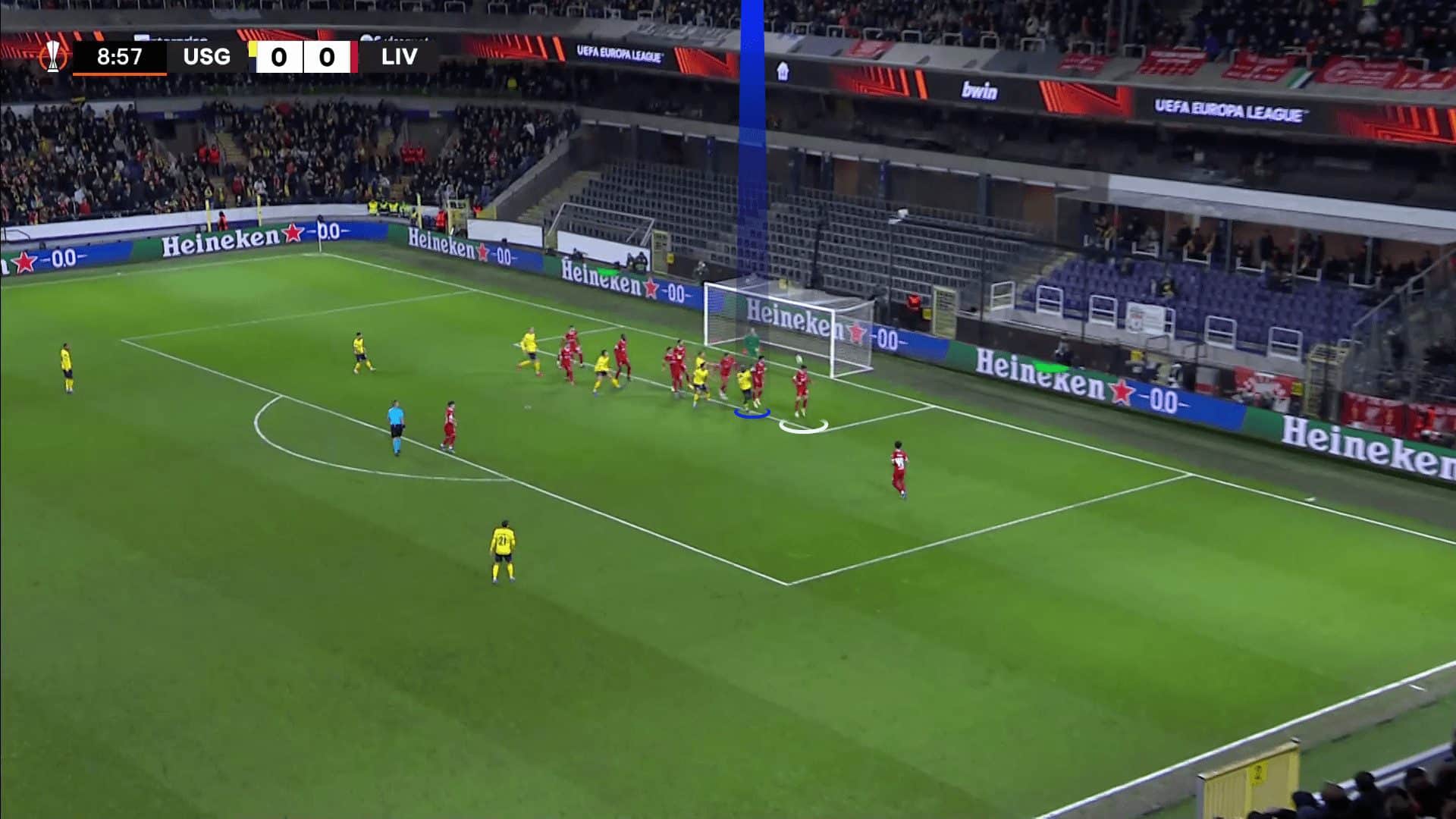
Nods from the far post back to the near post
One of the weaknesses of fixing the near-post defender at his position is covering the offside making it possible for the opponent to threaten the goal from a close distance by a nod pass from the far post to the near post or even any loose ball.
Let’s explain in detail.
In the first photo, the targeted player, in green, acts as he waits for the rebound, but while the ball is in the air, he exploits this time to attack the targeted area with the help of his teammate highlighted yellow, who blocks any defender moving to him.
Let’s track the near-post defender, in blue.
In the second photo, his teammate in yellow blocks the opponent who can move toward him, leaving only the rebound defender in white who doesn’t see the threat behind him, and his attention is dragged by the other two rebound players.
In the third photo, this defender sees the targeted player late, so the targeted player nods the ball at his blind side, so this rebound defender measures the ball wrongly, as shown in the fourth photo.
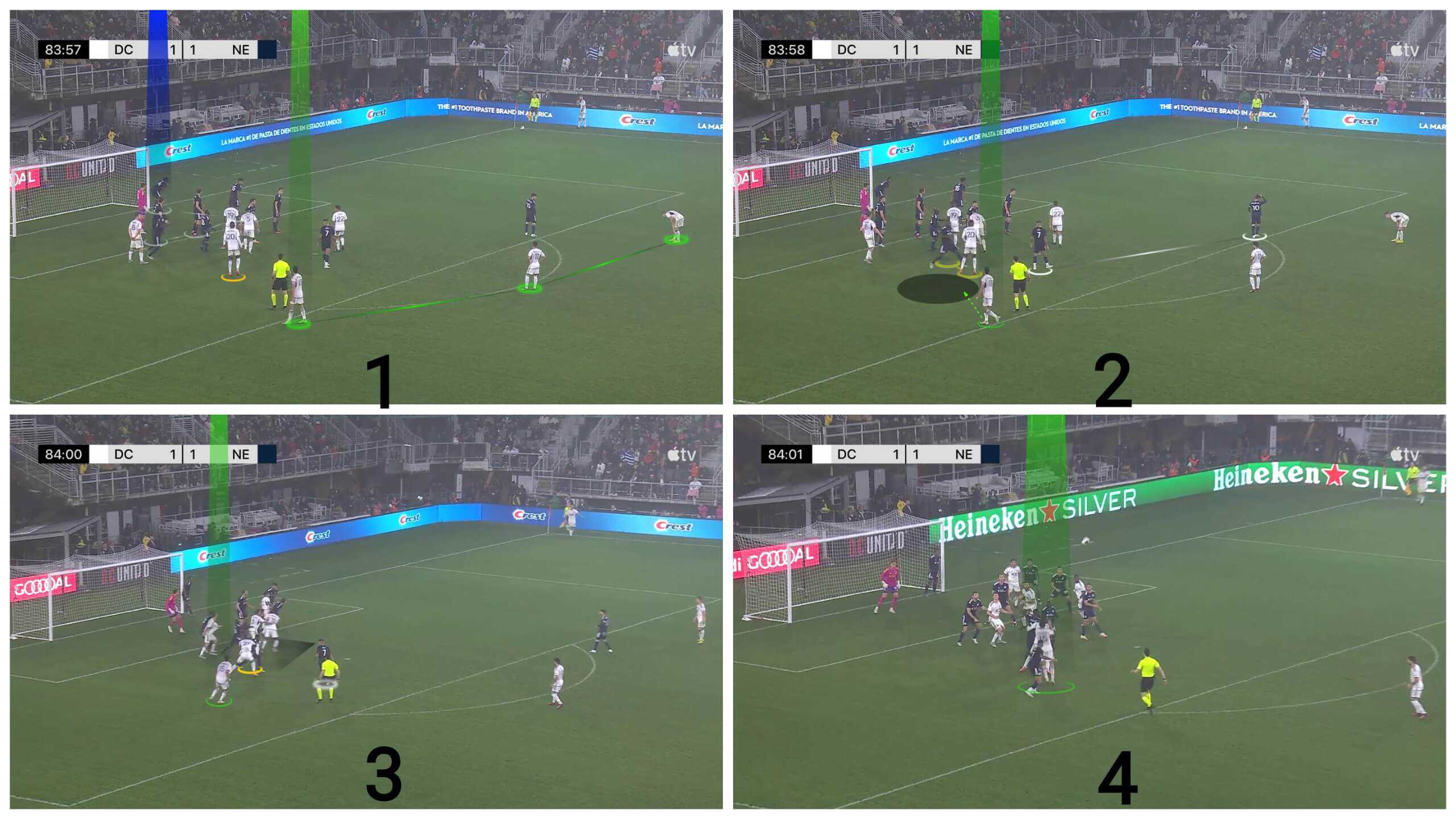
After all of that, the near-post defender is still fixed to the near post which makes the red-arrowed attacker onside who receives the headed pass, but luckily, the shot is inaccurate, as shown in the two photos below.
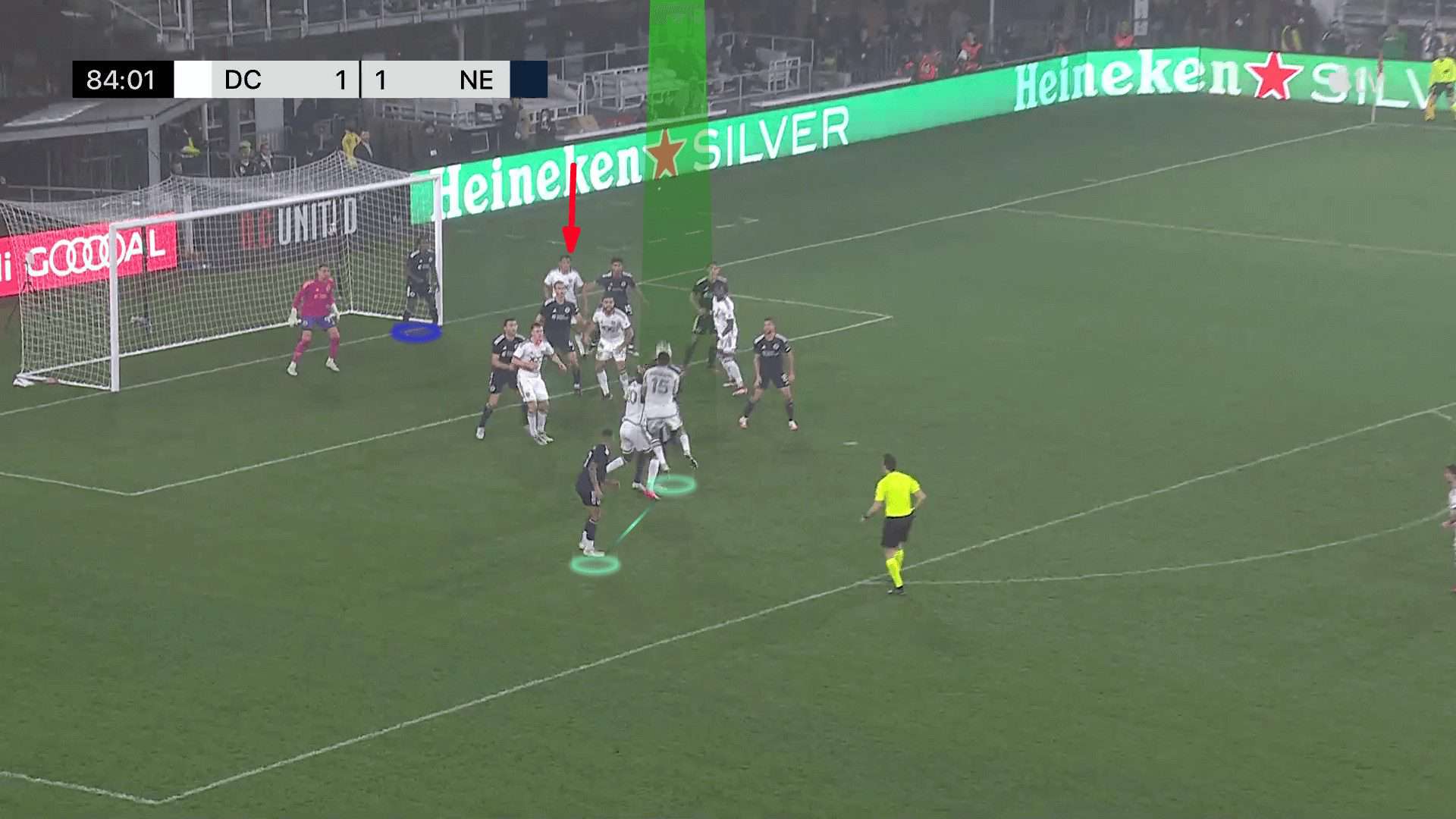
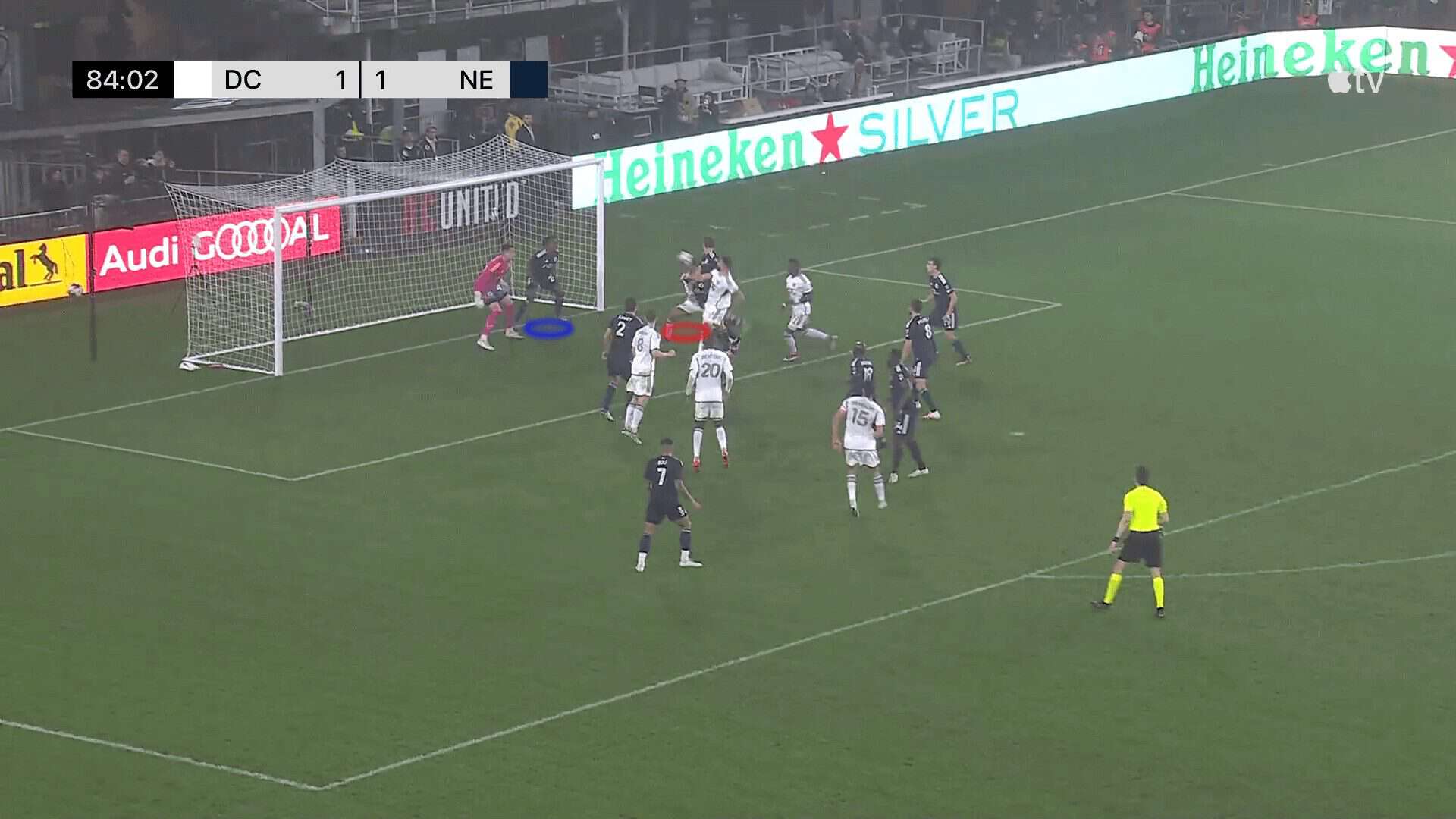
Borussia Mönchengladbach can deal with that idea against Bayern Munich, as we will explain in detail.
In the first photo, it is clear that they defended with five zonal players, three man-markers, a player against the short corner and a rebound player.
In the second photo, Bayern Munich face these three man-markers with five attackers, so there are two players free, highlighted in blue, so one of them, the late one who is away from man-markers, moves toward the far post to nod the ball, so the first part is difficult to defend.
The attacking team can achieve numerical superiority in these outlying areas because the defending team focuses on the most critical areas near the goal, so the solution is using the off-side trap while taking care of the defenders’ back, not only focusing on the first touch, as we will explain in the third photo.
In the third photo, we see the zonal defender on the near post who will move with the line after the ball is played, as shown in the fourth photo, unlike the previous example.
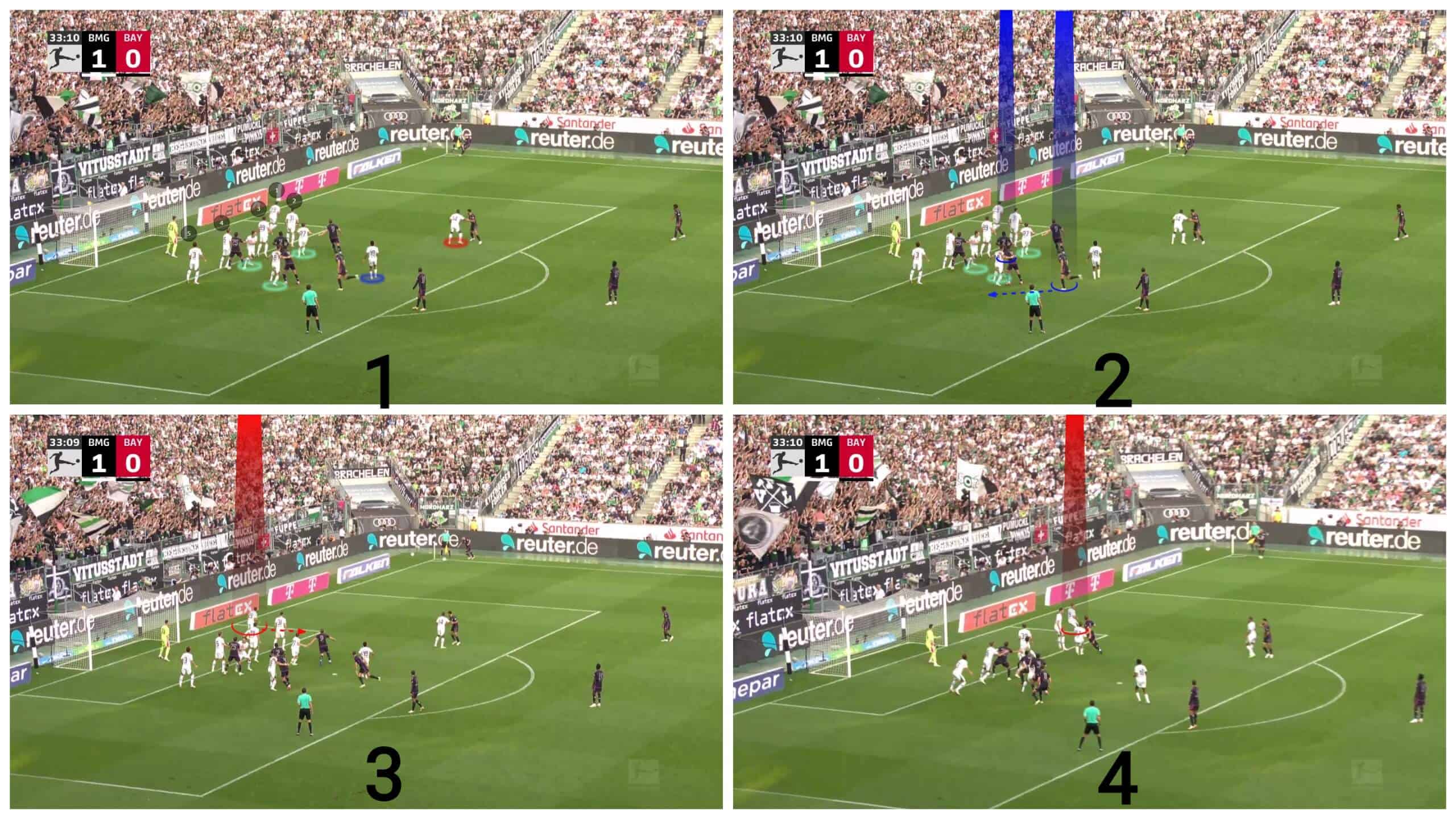
In the first photo below, the five-player line is shown.
We come to the second important thing that reduces the chaos: leaving the last two zonal defenders to go up to defend the first touch.
At the same time, the three players on the near post are ready to defend the area behind them while keeping themselves on the same line, as in the second photo below.
In the third photo, they get closer and ready to cut the headed pass, and they succeed, as in the fourth photo.
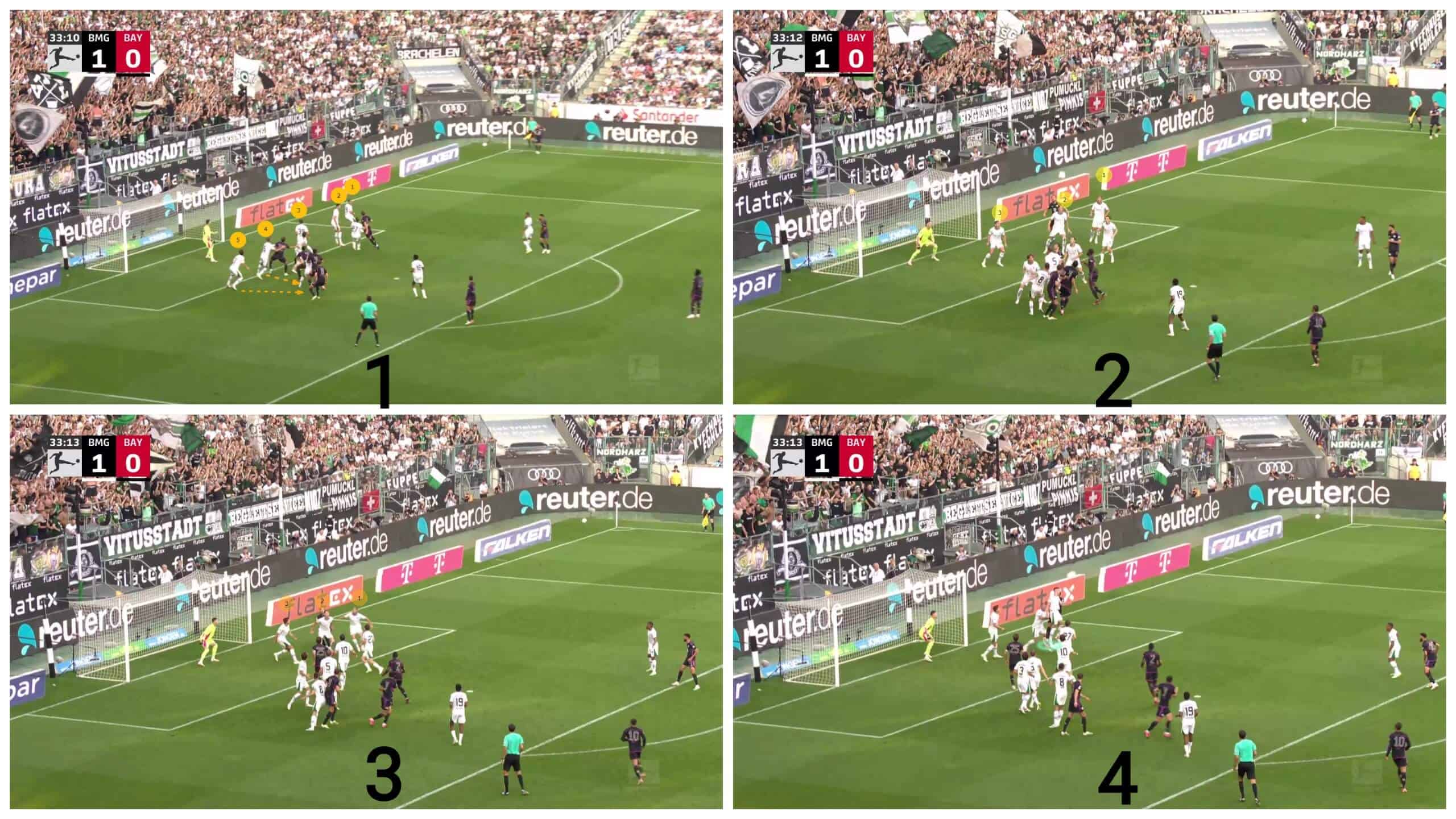
Short corners
Some teams also use this near-post defender to defend the short corners with his mates against the opponent’s numerical superiority in the short and rebound area.
In the first photo below, you can find Man United overloading this area by four red -highlighted players while Liverpool’s traditional short-option defender, in green, and the blue rebound defender.
They need the support against this numerical superiority, so the yellow flick defender goes to help the short-option defender while the blue rebound defender is a little dragged to them, so our near-post defender, in black, goes with his mates in a line, as shown in the second photo, and then, go to defend the rebound zone, as shown in the third photo.
Man United’s player is forced to pass to the back, as shown in the fourth photo.

Similarly, this also applies to teams that defend with a man-marking system at the high level, so you can find below Newcastle’s defending scheme against in-swinging crosses by a man-marking defending system with green near-post defender and two blue zonal defenders.

They have the same system against out-swinging crosses, but a little shifted to the outside.
The attacker will move to receive a sudden short pass, so his marker will follow him, but the attacking team will be in a 2-v-1 situation over the defending team, putting the taker into consideration, so the near-post defender will follow them to solve this problem, as shown in the second photo below.


Far-post defender
Regarding the far post, most high-level teams have veered towards abandoning its literal application and opting to rely on the last zone defender according to the trajectory of the cross.
In in-swinging crosses towards the inside, this defender is positioned as illustrated below, in blue.
However, the role of the first defender, in white, remains crucial in attempting to gain the initial touch before the ball breaches the six-yard area.
If it does breach this area, the goalkeeper’s responsibility is to claim the ball before it reaches the far post, as depicted below.

As shown below, the path of the out-swinging cross doesn’t need a fixed far-post defender but needs the last zonal defender to be more out considering that the extent of the zone defender’s distance after the six-yard line or before it is debatable, but not fixed to the post.

Conclusion
In this analysis, we have elucidated the various roles of post defenders during corners in modern football and why they possess specific roles tailored to executing corner kicks to maximize their utility without feeling like a loss for the team or players involved.
In this set-piece analysis, we have demonstrated that the steadfastness of defenders stationed on the posts can also prove detrimental to their team, resulting in conceding goals, which is not merely a loss for players without benefit.






Comments